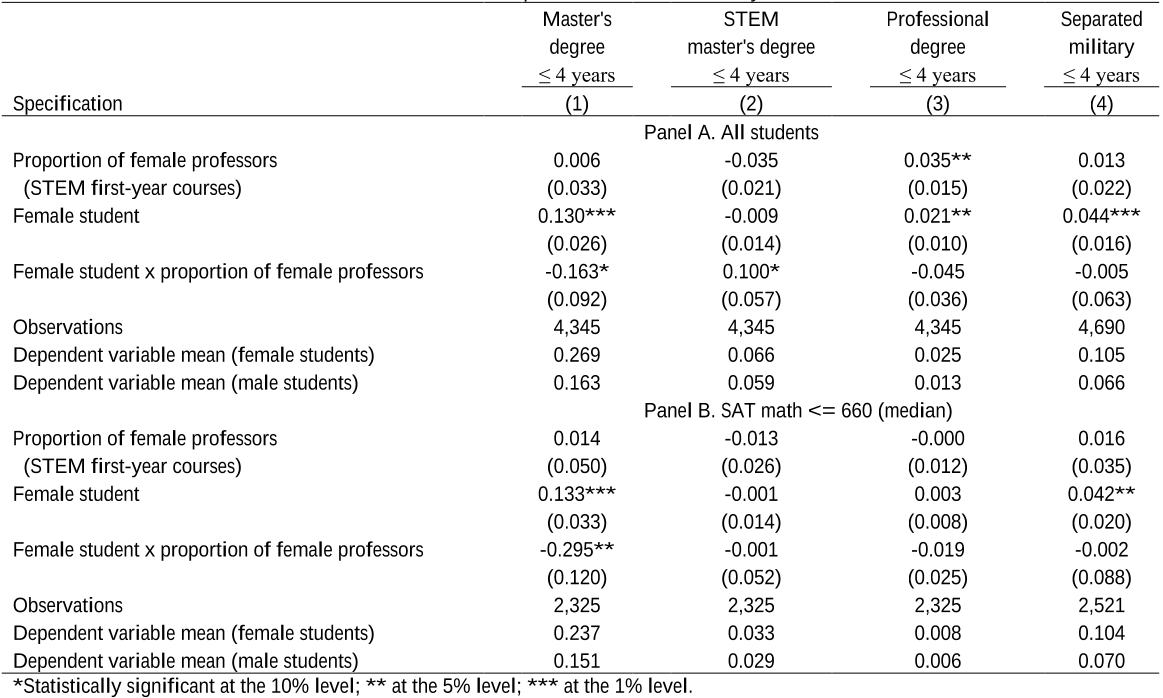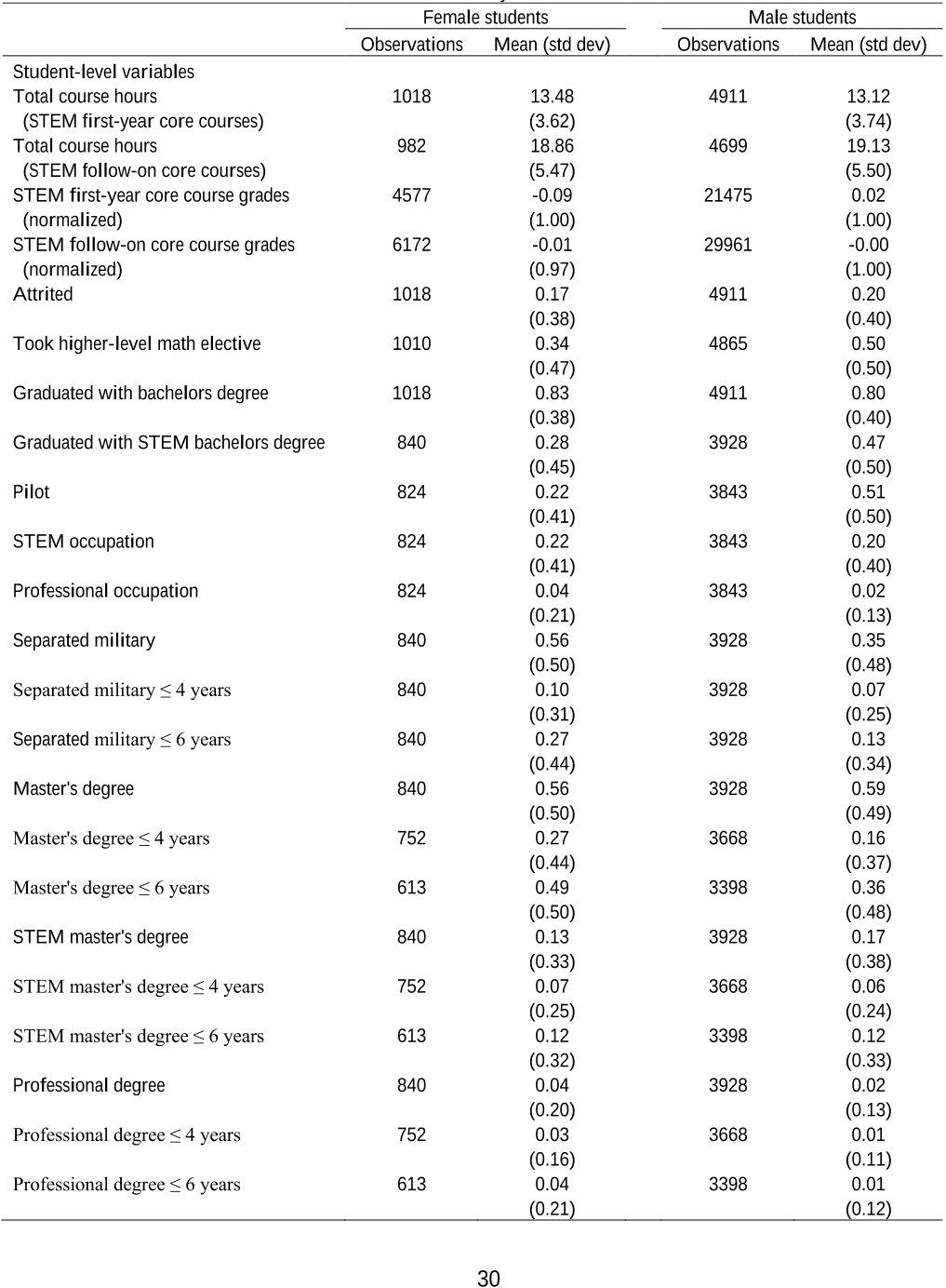




Did you find this useful? Give us your feedback












24 citations
6 citations
3 citations
1 citations
1,530 citations
718 citations
359 citations
296 citations
263 citations
increasingthe fraction of female professors in first-year math and science courses from 0% to 100% isassociated with a (statistically insignificant) 0.035 decrease in the probability that male studentsobtain a STEM master’s degree within 4 years of graduation, which is offset by a 0.035 increasein the probability that they obtain a professional degree.
The authors find that,among high-ability female students (i.e., those who scored in the top quartile of the math SAT),being assigned a female professor is associated with substantial increases in the probability ofworking in a STEM occupation and the probability of receiving a STEM master’s degree within6 years of graduation.
Among male students whose math SAT scores wereabove the median, the estimates of β2 are consistently negative and statistically significant atconventional levels, which suggests that a policy aimed at increasing the supply of femaleprofessors could have the unintended effect of discouraging male students from going intoSTEM careers.
Once through formal training and partway through their first military assignment Air Force officers can apply to pursue an advanced academic degree through the Air Force Advanced Academic Degree (AAD) program.
increasingthe fraction of female professors in first-year math and science courses from 0% to 100% isassociated with a 0.445 increase in the probability that high-ability female students worked in aSTEM occupation (Panel D).
When the authors restrict the sample to studentswhose math SAT scores were above the median (i.e., above 660), three estimated coefficients(out of a total of 22 estimate coefficients) are significant at conventional levels.
Student characteristics include SAT verbal score, SAT math score, academic composite score, leadership composite score, fitness score, and indicators for black, Hispanic, Asian, other, recruited athlete, attended preparatory school, enlisted prior to entering the Academy, and age 17-19.